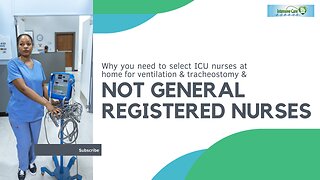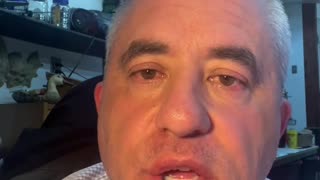What is the Requirement for Intensive Care Nursing Staff at Home for Home TPN?
What is the Requirement for Intensive Care Nursing Staff at Home for Home TPN?
Book your free 15-minute phone consultation here
http://intensivecarehotline.com/scheduling-appointment/
Call directly 24/7
+1 415-915-0090 USA/Canada
+44 118 324 3018 UK
+6141 094 2230 Australia
Email support@intensivecarehotline.com
Get 1:1 consulting and advocacy
1:1 phone counselling
http://intensivecarehotline.com/one-on-one-counselling/
Become a member for families of critically ill Patients in Intensive Care
https://intensivecarehotline.com/intensivecaresupport-org-membership/
Immediate action steps http://intensivecarehotline.com/take-control-take-charge/immediate-action-steps/
https://intensivecareathome.com
And if you need a medical record review, click on the link and we can help you with reviewing your loved one’s medical records while they’re in ICU.
https://intensivecarehotline.thrivecart.com/review-of-medical-records/
Facebook Page: https://www.facebook.com/ICUhotline
Twitter: https://twitter.com/icuhotline
#icu
#intensivecare
#criticalcare
In today’s blog, I want to focus a little more on home TPN or about TPN in general and today’s episode in the blog is
What is the Requirement for Intensive Care Nursing Staff at Home for Home TPN?
So, we are certainly learning with intensive care at home that there’s an increased demand for patients or clients on home TPN or PN.
Now, for those of you who haven’t heard of TPN, TPN stands for total parenteral nutrition, and it’s basically intravenous nutrition, and it’s often given for people with conditions such as gastroparesis, or simply an inability to digest nutrition, gastric cancer or they might have had a Whipples procedure or other conditions that lead to the inability to take in oral or PEG feeds and they need total parenteral nutrition or TPN.
PN stands for parenteral nutrition. The difference between TPN and PN is simply that if clients get TPN their only form of nutrition is TPN and when the reference is made to PN or parenteral nutrition, clients have other forms of nutrition also.
So then the question is, can clients on TPN or PN go home?
Yes of course absolutely.
Think about it, if ventilated and tracheostomy patients can go home with intensive care at home, then clients requiring TPN can definitely go home.
We have certainly looked after patients at home on TPN. And the way we do this is basically by liaising with the hospitals to get those patients home. We are often liaising with the gastroenterology team or with dieticians, nutritionists, etc…
So what is actually needed to get a patient home on home TPN? Well, the patients or clients need a PICC line or a central line which is a device that enables patients to receive TPN or total parental nutrition.
They can’t have it through a ‘normal’ IV cannula. It needs to be given through a PICC line or a central line or a CVC catheter. And that is also why patients on home TPN need intensive care nurses because looking after a PICC line, central line, as well as TPN is a very specialized skill that usually only ICU nurses have or critical care nurses have because to access the central line catheter or the PICC line needs to be done sterile.
Central lines (CVC’s) or PICC lines are rarely being used outside of intensive Care Units, therefore it is a skill that mainly ICU/PICU nurses have.
A central line (CVC) needs to be flushed in a sterile way to keep the PICC line or central line patent, clean, and free from infection. Also when TPN is being prepared and connected to the patient again, that needs to be done in a sterile manner and people that have worked in the intensive care have that specialist training and skill.
Now next, when someone is on TPN through an infusion pump, the pump may alarm quite frequently actually because TPN is actually known to have frequent air alarms.
So even if there’s only a micro bubble of air in the IV giving set, the infusion pump frequently alarms and the ICU nurse then needs to make sure that the infusion giving set is free of air, so that there’s no air going into the patient’s vein, of course, because that could be really detrimental for a patient’s safety, could potentially cause an air embolus and so forth.
So therefore for the period of time that a client is receiving home TPN which is often up to 24 hours a day, an intensive care nurse needs to be present to manage the TPN, manage the pump and manage any alarms that may come up...
Continue reading at: https://intensivecareathome.com/what-is-the-requirement-for-intensive-care-nursing-staff-at-home-for-home-tpn/
-
 17:39
17:39
Intensive Care at Home
3 months agoHow Important is ICU/Hospital Discharge Planning for INTENSIVE CARE AT HOME Clients?
26 -
 10:42
10:42
Intensive Care at Home
2 months agoWhy You Need to Select ICU Nurses at Home for Ventilation&Tracheostomy&Not General Registered Nurses
23 -
 6:07
6:07
Dr. Harris The Legendary Content Creator
3 months agoThe Requirements For How To Become A Nurse
5 -
 2:23
2:23
Dr. Harris The Legendary Content Creator
3 months agoWhat Is A Nurse And The Responsibilities Of A Nurse
3 -
 28:53
28:53
Waking the World up
2 months agoWhistleblower Nurse Liz Rena – Hospitals Empty Until they were Rewarded for following Covid Protocol
2.98K17 -
 1:27:16
1:27:16
HEALTH EXPOSED By Health Revival Partners
2 months ago174. Niacin: Proper Dosing for Kidney Disease - Dr. Steven McConnell
46810 -
 54:41
54:41
jodiomalleyrn
1 month agoThe mentor, the patient, and the nurse preceptee
97 -
 2:23
2:23
igetall
2 months ago#HomeHealthcare #RetirementHomes #LongTermCare #NursingHomes #PrivateCare #SovereignEase
7 -
 2:10
2:10
Waking the World up
2 months agoHow just ONE Wellness Visit can Lead to a Lifetime of Drugs
2.88K10 -
 5:27
5:27
Dr. Harris The Legendary Content Creator
3 months agoThe Requirements For How To Become A Dental Hygienist
4